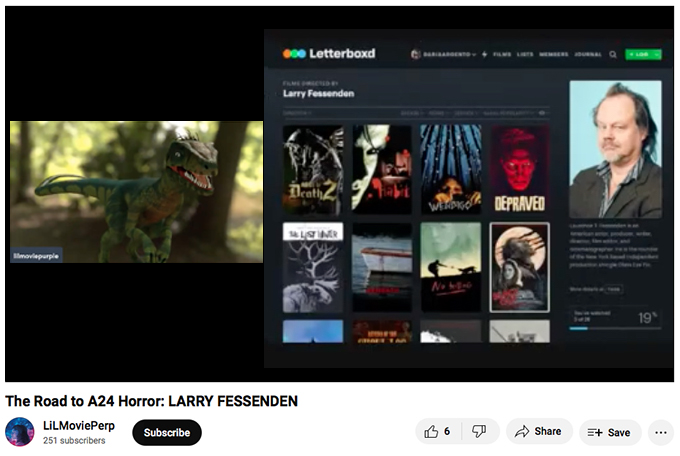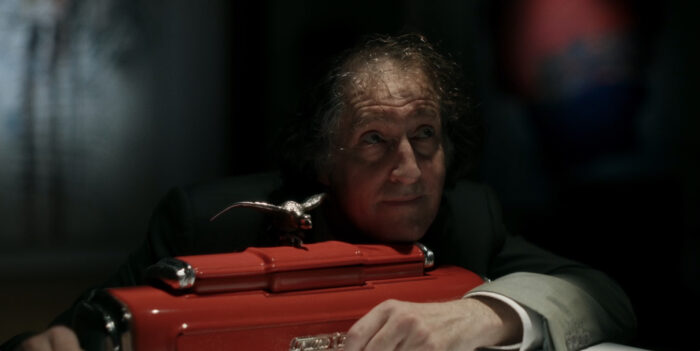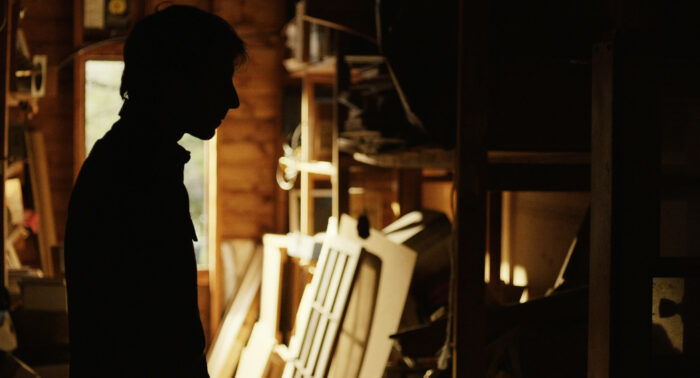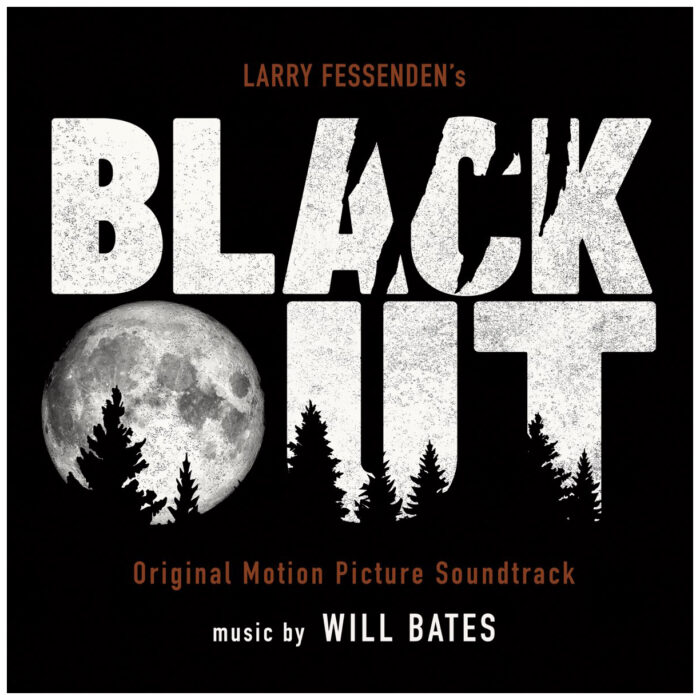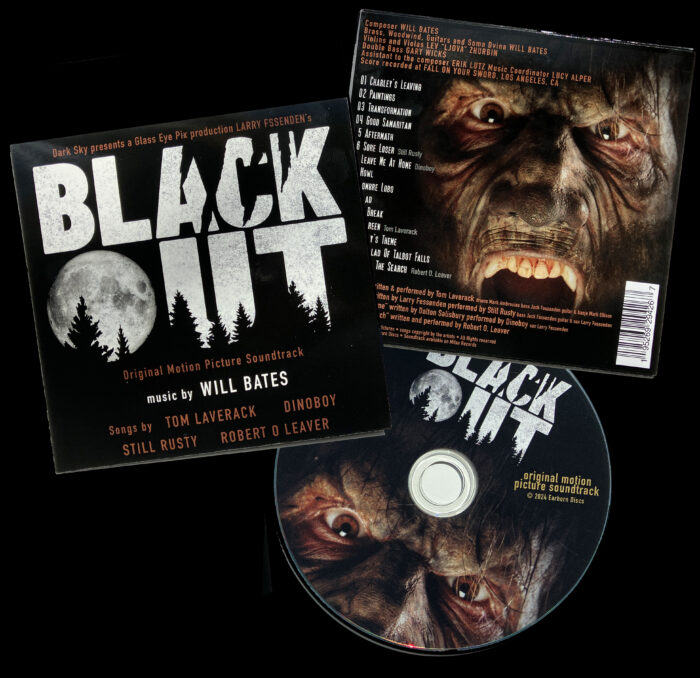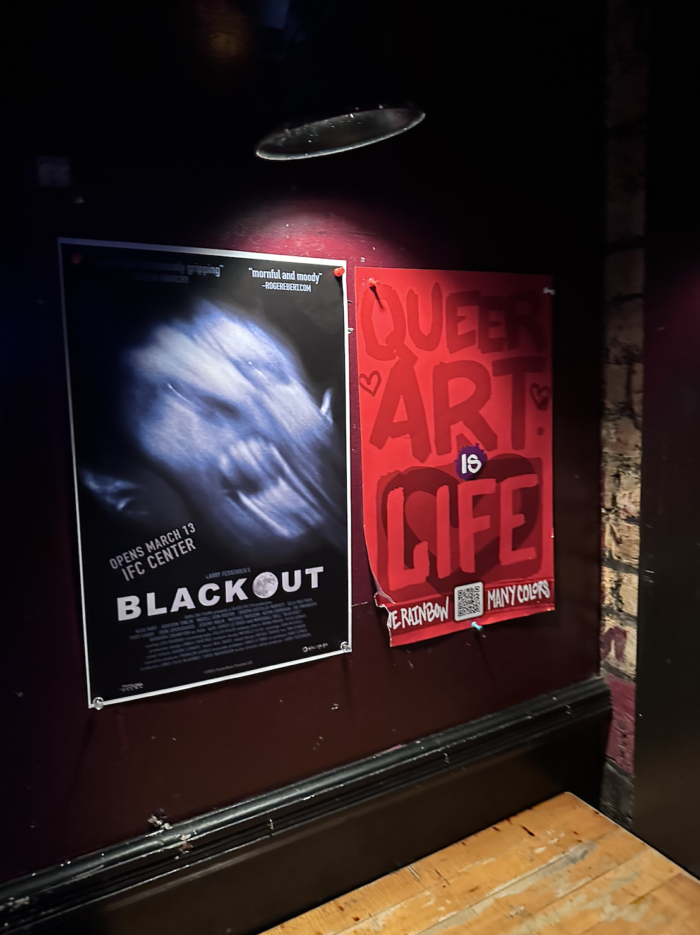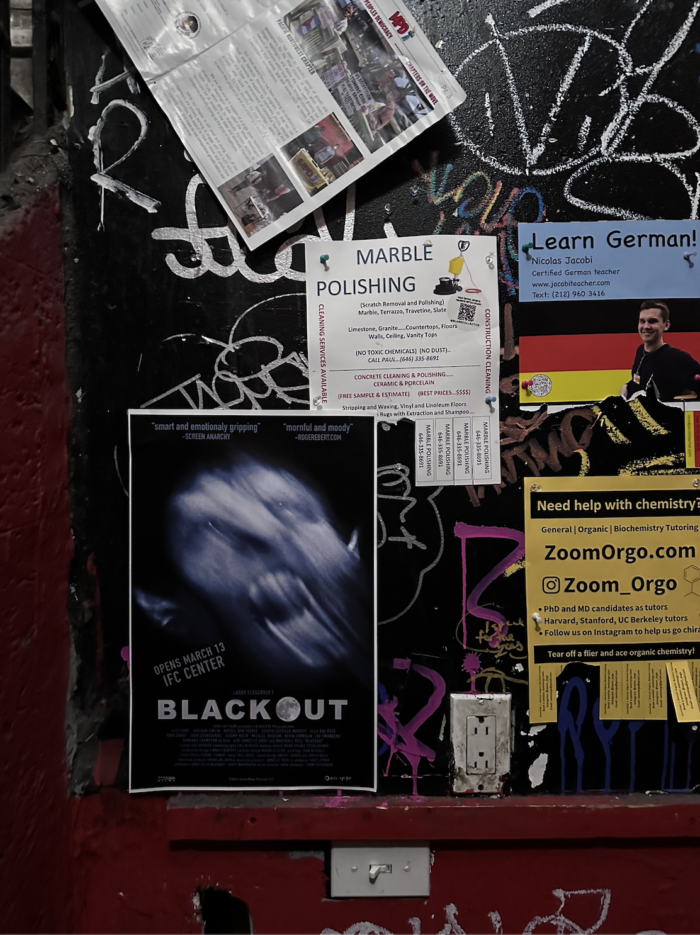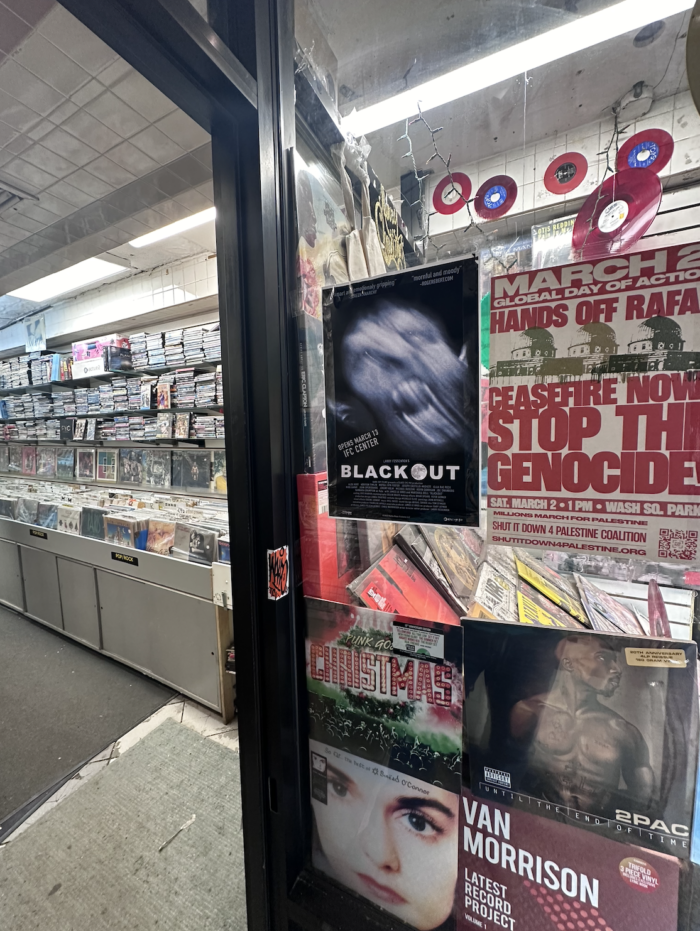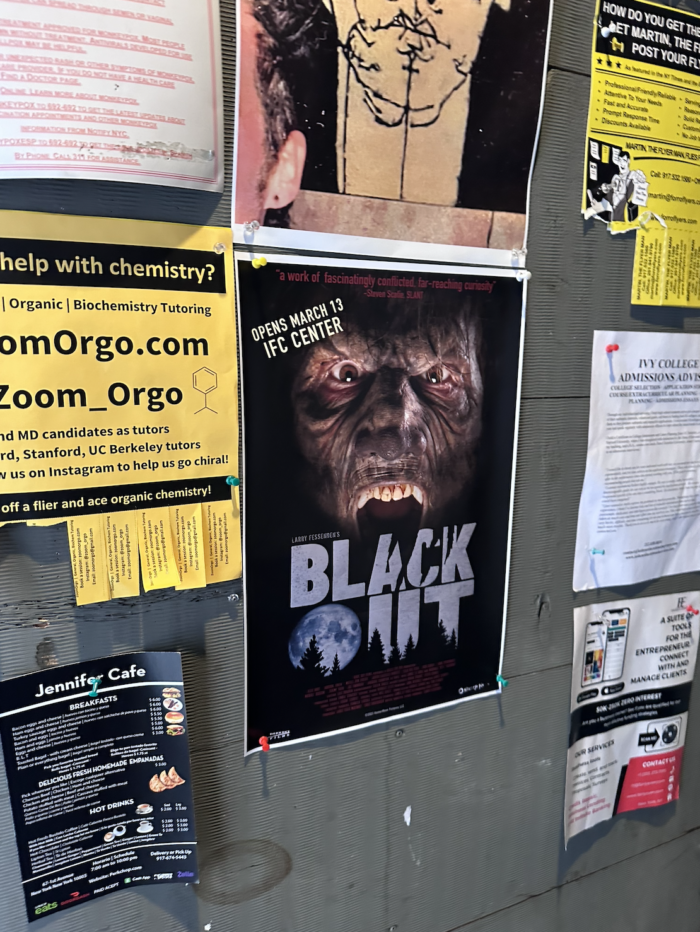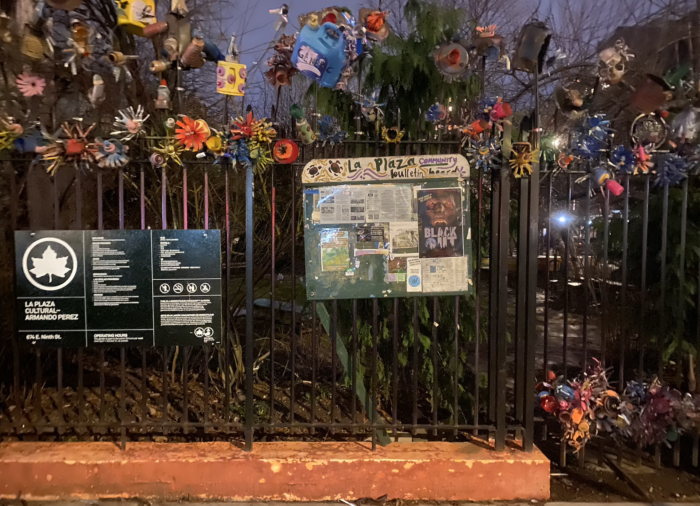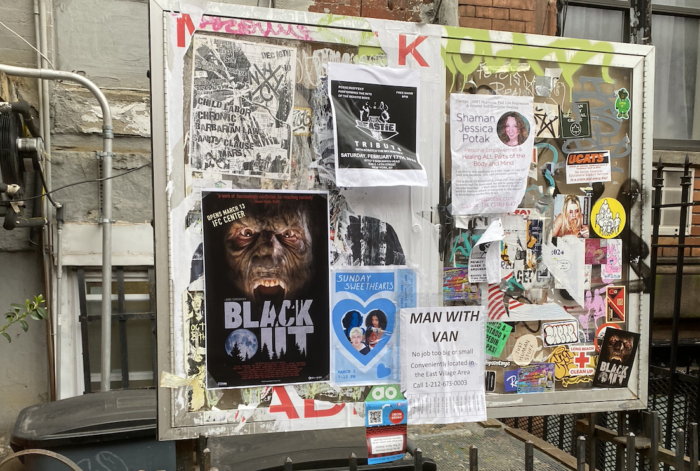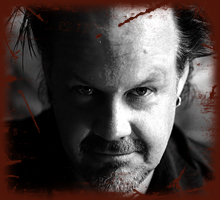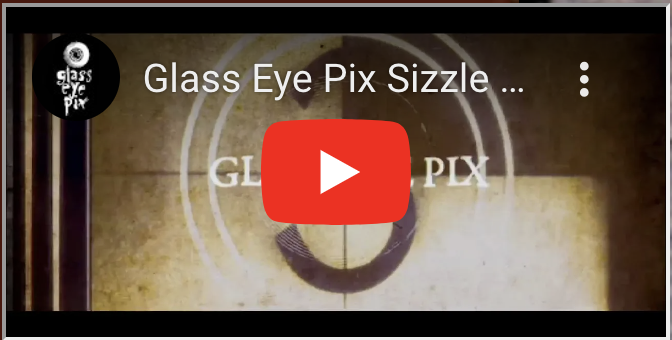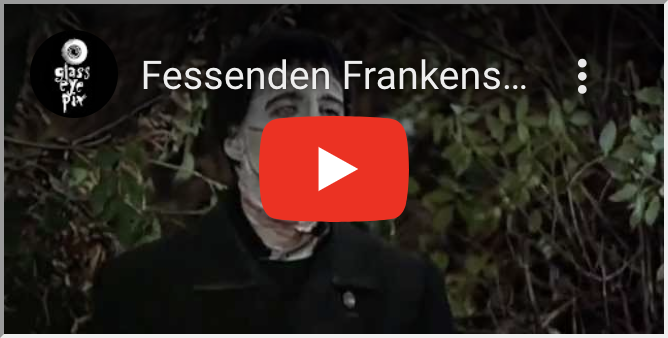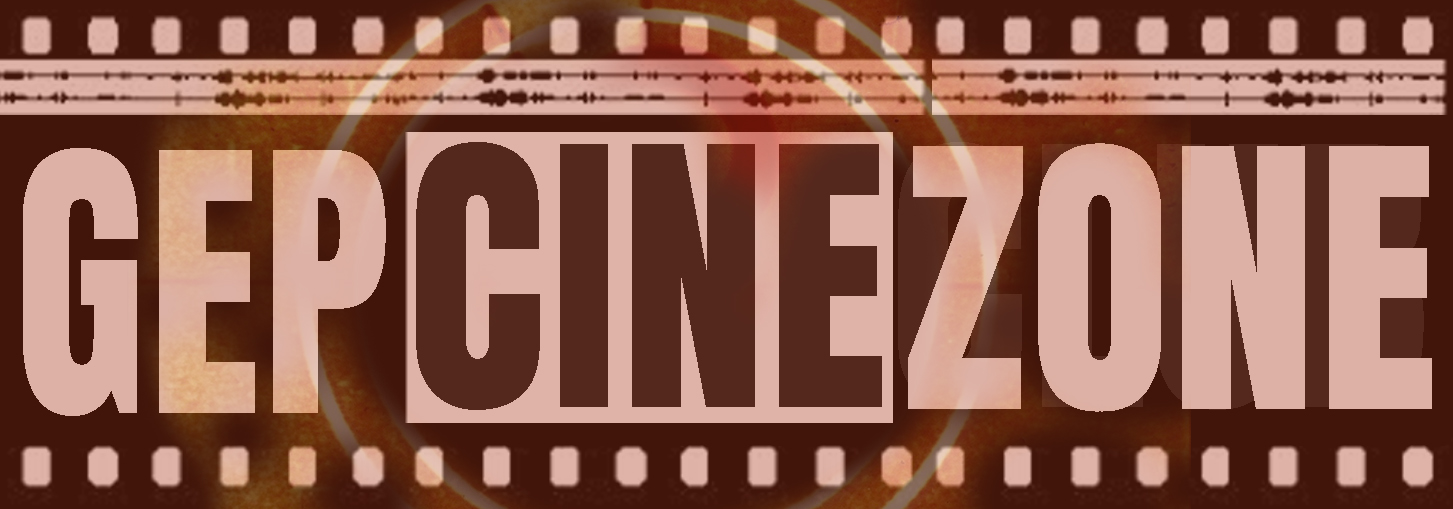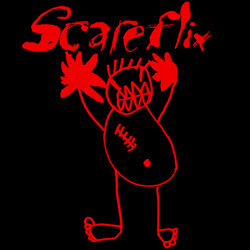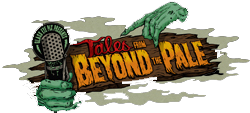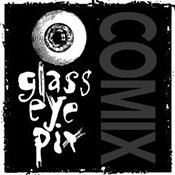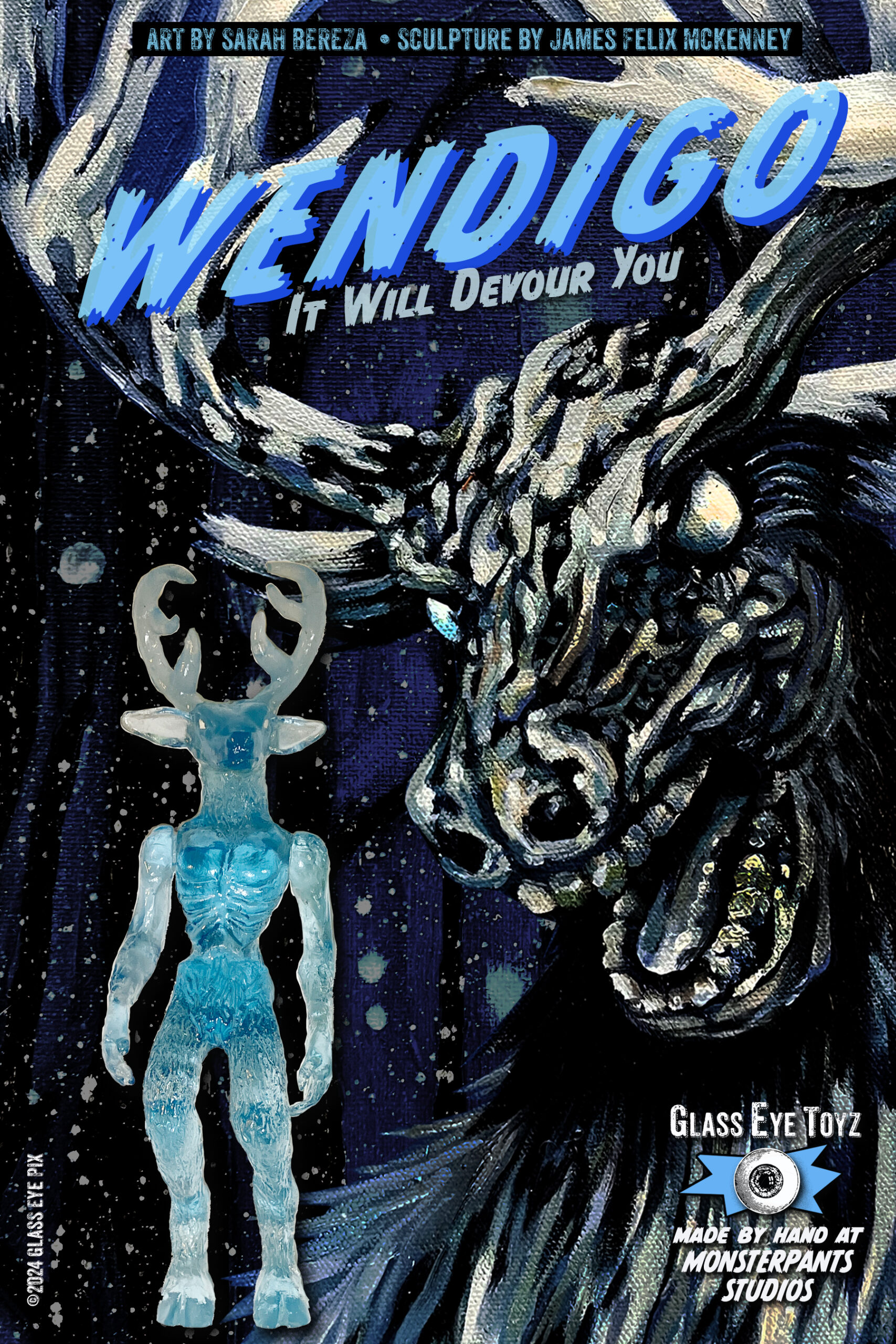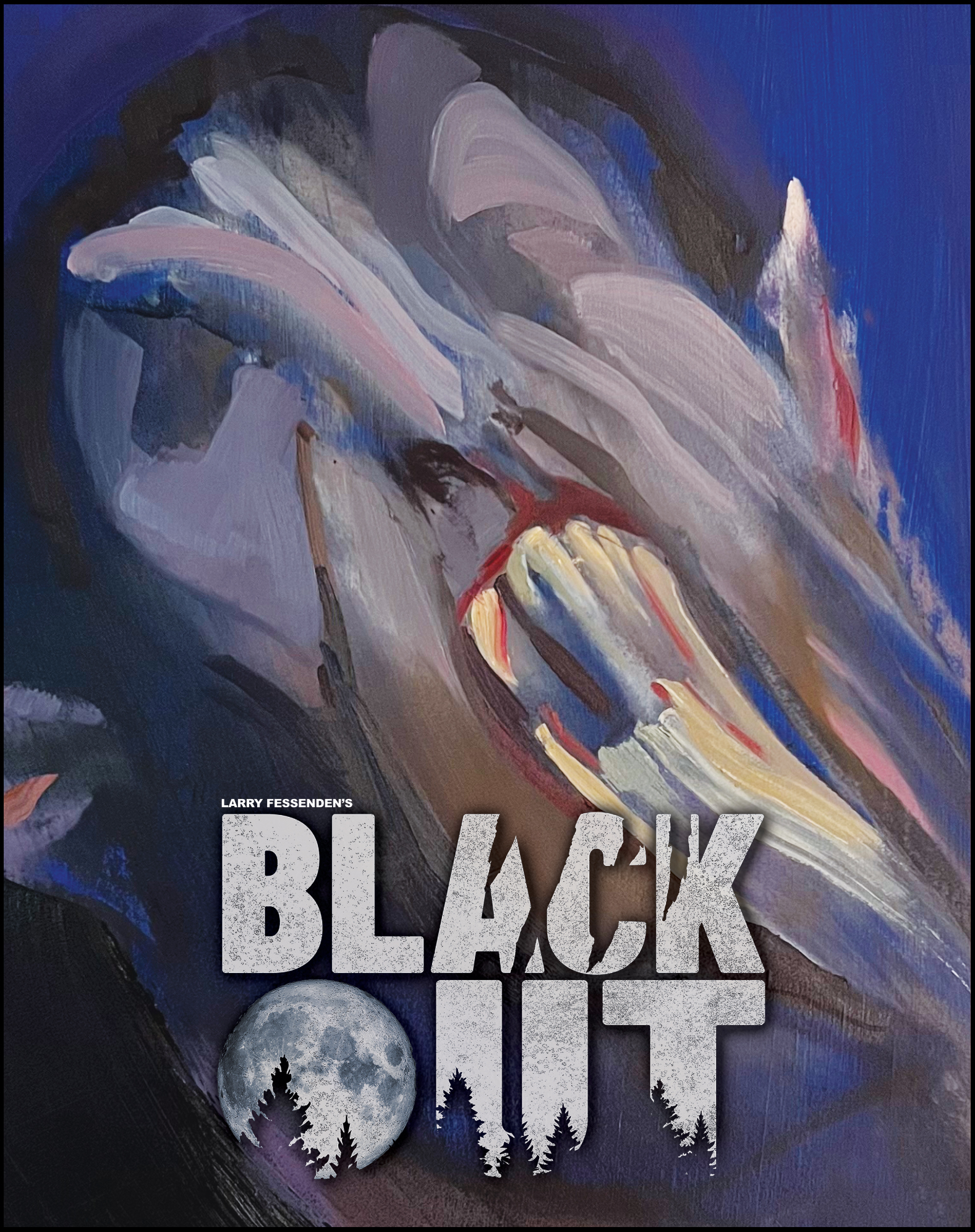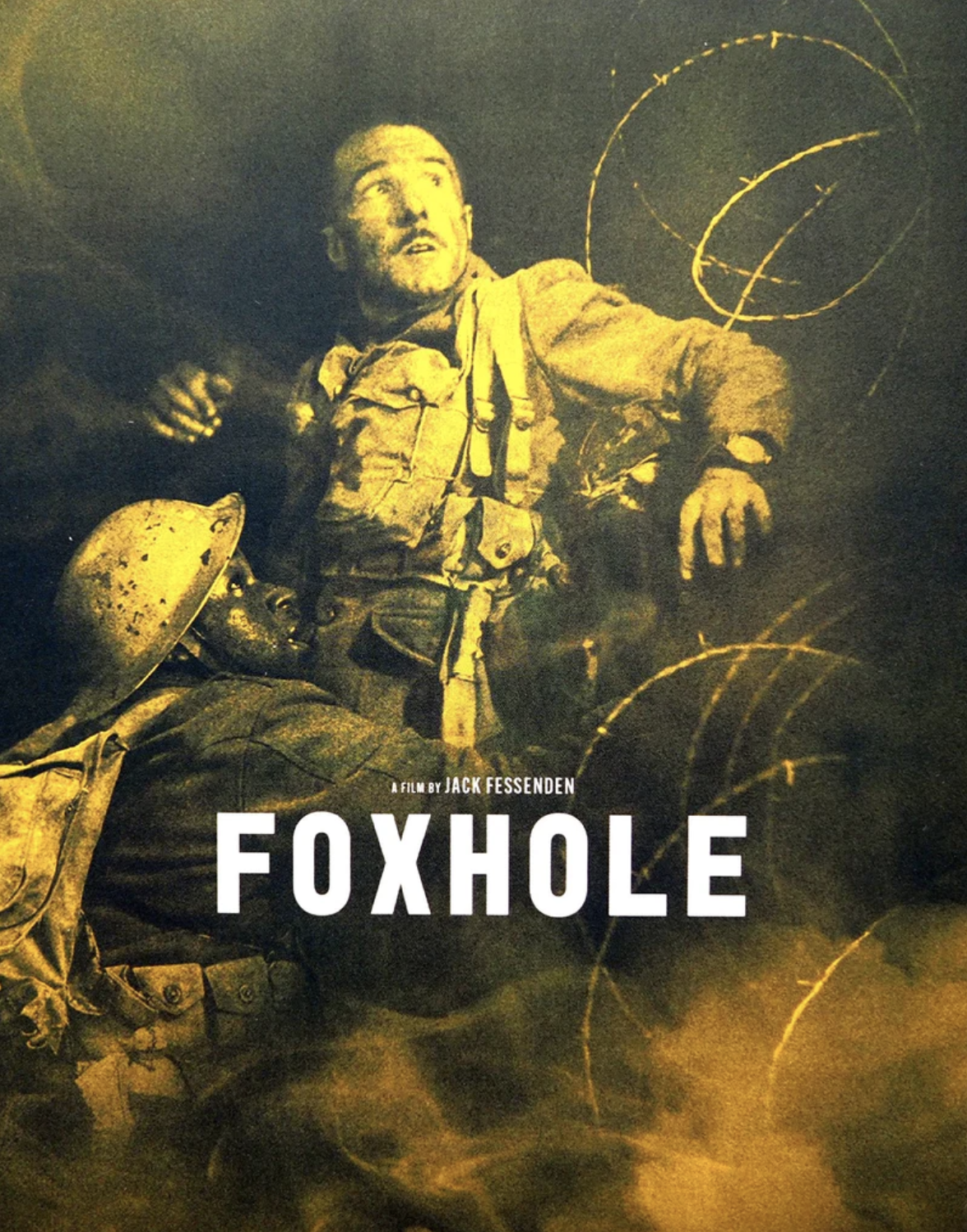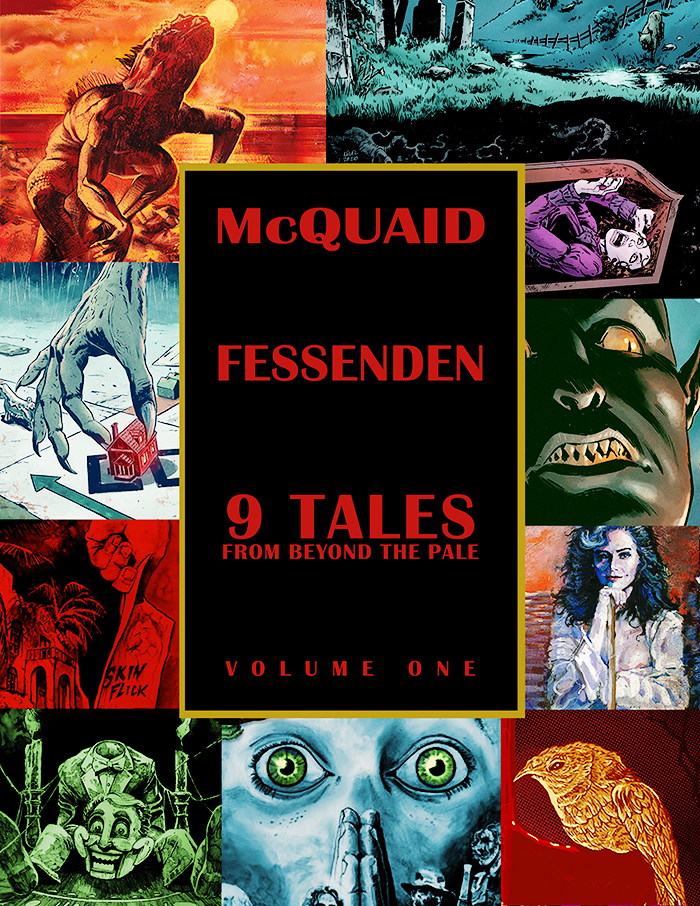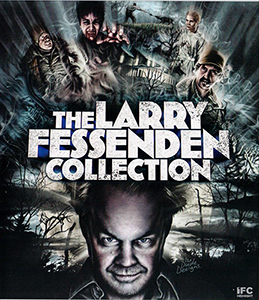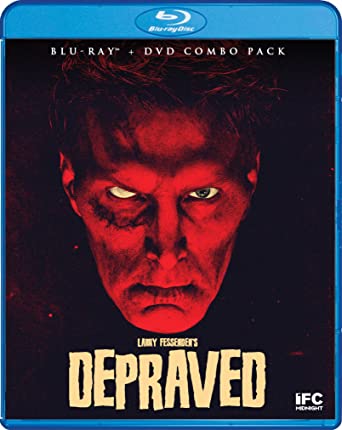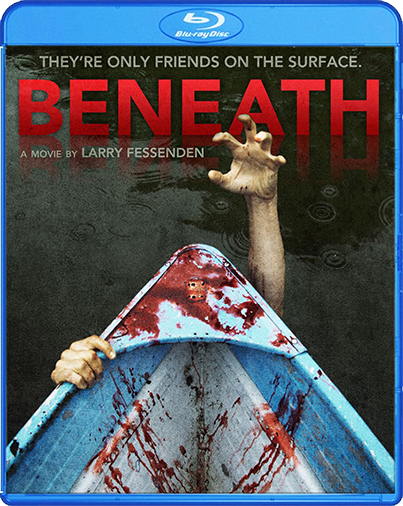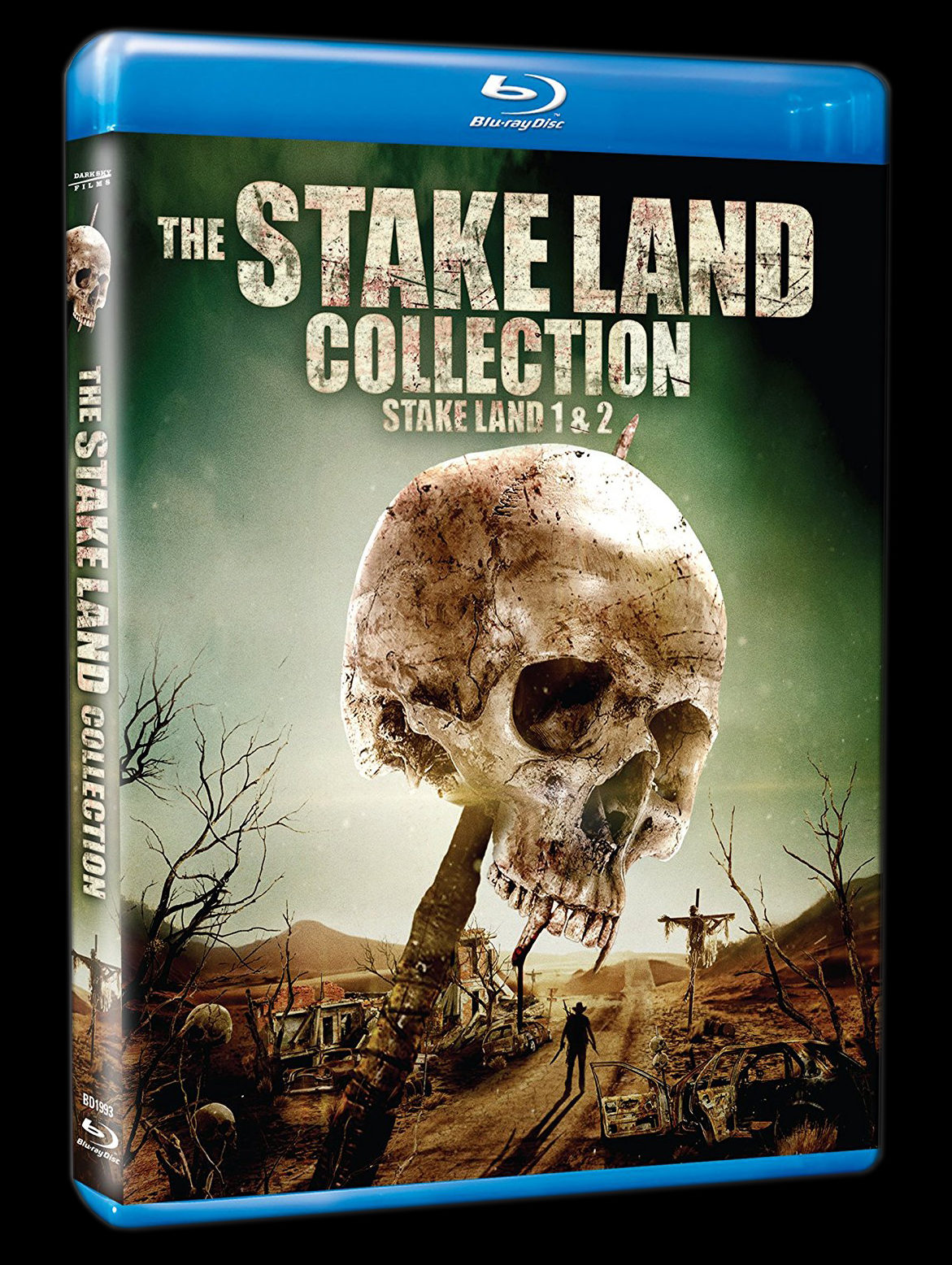LiLMoviePerp, a cinephile who identifies as a dinosaur, advocates for Fessenden’s role in paving the way to A24’s brand of horror before getting derailed midway through his presentation by fellow commentator seemingly indifferent to Fessenden’s oeuvre but awed by his forehead. Glass Eye Pix’s legacy status hangs in the balance!
BLACKOUT composer Will Bates interviewed in Musique Fantastique
Q: You’ve worked with Larry Fessenden previously, notably on his unique films BENEATH and DEPRAVED, and now with BLACKOUT. What does he look for in music for his movies?
Will Bates: I feel very fortunate that the first horror movie I ever scored was for Larry. He told me a lot about how to work with the genre, and we connected over this sense of elegy and pathos and almost tragedy with horror. I feel like that’s something the filmmaking is embracing with BLACKOUT. Scary things for Larry are more frightening and disturbing if a certain amount of tragedy is involved, and music has a compelling way of portraying that. We’d already developed a great shorthand and language when we worked on BENEATH and then DEPRAVED – this is my third film with him. I consider him a dear friend at this point. One of the great benefits of working with people repeatedly is that you start to trust each other, and he let me play with the tone of this movie and experiment. I adore him for that. He’s a very loved man, as I’m sure you know.
Q: BLACKOUT is a unique werewolf story based on Larry’s audio play of the same name. What was he looking for in the music for this film?
Will Bates: Whereas, with DEPRAVED, he talked a lot about the brain, synapses, and electricity. With BLACKOUT, we wanted to be more organic and more of an expression of the woods and memory. We talked a lot about memory. In the end, the subtext of this film is just that. What happens to a werewolf and the literal blackout of the transformation? So I think, in terms of the instrumentation, it was very organic – lots of horns, woodwinds, and guitars, which is a new thing for me with Larry. We’ve never really done guitars in his scores before. There are no synths, none of that; there’s hardly any electronics. Maybe towards the end, when things get a bit crazy, I’d start reaching for some of those tools, but overall, it’s very raw, Lots of strings – and when I use the strings they were recorded very close to the instrument. It’s a very dusty feeling, natural and scratchy. One thing I could do here that I hadn’t done too much before was… I recently reconnected with a double bass player named Gary Wicks [ https://www.garywicks.com/ ], a jazz musician. I’m a reformed jazz musician myself. Gary’s an excellent upright bass player, and he did a lot of great arco (bowed playing) with his instrument and used his instrument to create crazy crunches and sound effects. Larry always wanted churning, crunching bones – like “let’s get that feeling like the hair is coming out of the skin and all of that stuff, which is so visceral with werewolves. The double bass became a thing that I gravitated toward a lot, and I looked to Gary to work on almost every cue on this one.
Q: I want to ask you about a few particularly interesting cues. “Howl” is just that, a mix of sonic howls and roiling brass, followed by “Jail Break,” which added its own sonic confrontation of sounds…
Will Bates: Wow, that’s a great description! This movie was also interesting in that, while Larry was editing, he wanted a tool kit of stuff, which is a way that we’ve worked together in the past. We’d talk about themes for characters, like the significant tent-pole cues for the movie, and I’ll work on those. But alongside those, he always had stuff to play with, and I tend to write that way, anyway. I’ll throw lots of things at the page and lots of sketches, which tends to be my journey to find those big themes. The sketches always end up being useful, especially with a filmmaker like Larry, who likes to use music while he’s editing, and sometimes I’ll give him the stems for those sketches.
“Howl” was one such thing. I thought of finding recordings of wolves, sketching them, and pitching them to make this an even richer tapestry of layered notes. When you take a howl from a wolf and stretch it, you can identify individual notes and tones layered. I started to write around the shape of the howling melody, and that’s what that piece is. I isolated it into a fifteen-minute section, stretched-out wolf howl, and then orchestrated it. That’s what that piece is, and then added Gary’s bass and a few other things – and then, of course, the horns. Larry’s one of the only filmmakers who doesn’t make me take the saxes out, so I’m always reaching for the horns, knowing he’ll love it! That’s always reassuring!
Q: “Charley’s Theme” reprises the opening “Charley’s Leaving” with a more delicate sound…. along with “The Ballad Of Talbot Falls,” a kind of jazz interpretation of the previous melodic arrangements.
Will Bates: That’s right, yeah. Again, I’m sort of betraying my background a little bit with that one, I suppose. Larry isn’t afraid of that raw emotion. He’d say… “You’ve got this theme, just do it, man! Make it big and bold and as emotional as it can be. I love that; it’s a wonderful note for a composer to have.
Q: The concluding song nicely completes the film, with Charlie singing a personal ballad that sums up his experiences throughout the story. How would you interpret the movie yourself from this perspective?
Will Bates: I think, for me, there’s such a sadness about the werewolf. Having to leave that life behind and not even having an awareness in your waking state of what you have been enjoying as this creature. That’s the feeling I get – this sense of regret and longing. It’s deeply sad. I can’t think of a werewolf movie that’s not that way. It’s a certain kind of tragedy, and there’s a beautiful love story in this as well, and having to leave here behind. So, yeh, I think loss, and that was kind of the brief, too, this elegiac idea that we’re left with in the movie.
Slashfilm: BLACKOUT one of “8 Best Horror Movies of 2024 So Far”
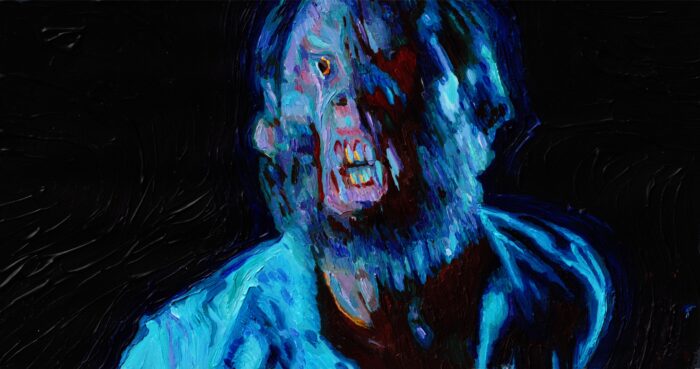
Larry Fessenden, indie horror auteur, is back — with a werewolf movie. But “Blackout” isn’t your typical lycanthrope flick. This is more like a quirky indie character drama that also happens to be about a werewolf. The wolfman in question is Charley Barrett (Alex Hurt), a working-class artist who lives in the small autumnal town of Talbot Falls. When we meet Charley, he appears to be getting his affairs in order. There’s a reason for that: he knows he’s a werewolf and he’d like to end his life before he turns back into a monster and kills more people.
While there’s werewolf action to be had here, complete with throats ripped out and limbs torn off, Fessenden is more interested in the characters who populate the town. Seemingly every person who shows up on screen is a quirky, memorable individual, and while some of the performances are shaky, Fessenden’s script has a way of making his players, no matter how minor, stand out. Occasionally funny (in a dark sort of way), “Blackout” has a melancholy vibe to match its autumn atmosphere, and best of all, the werewolf is just a guy wearing make-up. Sure, it’s not the most sophisticated make-up — but give me a practical werewolf over a CGI monstrosity any day. (Chris Evangelista)
DEADLINE: Fantastic Fest Title ‘Crumb Catcher’ Lands U.S. Release Via Music Box Films & Doppelgänger
Doppelgänger Releasing, the genre-focused label of Music Box Films, has acquired U.S. distribution rights to Crumb Catcher, the debut feature from Chris Skotchdopole.
Crumb Catcher debuted at Fantastic Fest, before going on to play Woodstock Film Festival and Brooklyn Horror Film Festival, where it won the Jury Prize for Best Ensemble and the Gold Audience Award.
The film was written and directed by Skotchdople and was produced by indie vet Larry Fessenden, alongside Brian Devine, Chadd Harbold, Bonnie Timmermann, and James W. Skotchdopole. Doppelgänger Releasing will open Crumb Catcher in theaters later this year, with a home entertainment release to follow.
Pic is led by Rigo Garay and Ella Rae Peck, with Lorraine Farris and John Speredakos rounding out the cast. Synopsis reads: After blacking out on his wedding night, Shane (Garay) and his wife (Peck) head to a remote estate for their honeymoon. That night, there’s a knock at the door; a waiter and bartender from the reception, blackmailing Shane for something he can’t remember doing. But the blackmailers don’t just want money. They’re after business partners for their invention, an outlandish device called…the Crumb Catcher.
“I started writing Crumb Catcher in 2016 as our country was being divided by the Great Hate Magnet. What emerged was a twisted tale of home invasion, two couples on opposing ends of the American Dream- a reflection of the absurdist times that in 2024, we are all still forced to participate in,” said Skotchdople. “My intention was to make a thrilling and suspenseful film, but my hope is that these couples have more to reveal. I’m proud to partner with Music Box Films and Doppelgänger Releasing, a company that believes in community and that the lifeforce of independent film starts in a movie theater.”
The deal was negotiated by Brian Andreotti of Doppelgänger Releasing and Joe Tufano at Submarine Entertainment on behalf of the filmmakers. Music Box Films has said it aims to revive its genre-focused label Doppelgänger Releasing with a series of new content. Doppelgänger was created in 2013. The label most recently released Raging Grace with Brainstorm Media.
As if we wrote it ourselves Dept: Adam Nayman’s thoughtful BLACKOUT review drops names aplenty
Excerpts from Adam Nayman’s review
Wolf Like Me March 19, 2024
… Blackout, the director’s most striking feature in decades… a nicely atmospheric, sturdily crafted creature feature with any number of intriguing entry points—not least of all that its story of an isolated, multicultural community with predators in its midst exists in indirect but loquacious conversation with Martin Scorsese’s Killers of the Flower Moon. Can you find the (were)wolves in these pictures?
… In more ways than one, Fessenden’s seventh feature is a shaggy-dog story; what binds it to Scorsese’s masterpiece is the way it interrogates certain all-American narratives to expose their ameliorating artifice.

… Fessenden, whose first student movie was a homemade remake of Jaws, has always worn his bleeding heart on his sleeve (in the best Romero tradition). Blackout’s political commentary isn’t subtle, but it’s so deeply woven into the fabric of the material that it feels like an artistic starting point instead of a market-savvy flourish. The theme—endemic to both werewolf stories and activist allegories—is transformation, and while Charley’s efforts to control and channel his condition don’t quite work out as planned, there’s something endearing about the image of a hairy, snarling small-town vigilante staring down the forces of late capitalism—shades, maybe, of Tom Laughlin as Billy Jack, filtered through a noble cinematic lineage of suffering, self-divided lycanthropes…
There’s more common ground between Fessenden and [John] Sayles—another filmmaker long since taken for granted—than one might think. After all, the latter made his name (and shored up his Hollywood collateral) scripting Joe Dante’s marvelous (and again, politically astute) werewolf shocker The Howling…
… Like Sayles, Fessenden is a regionalist interested in the relationship between the individual and the community, and he’s attuned to the specifics—from commercial signage to gift-store trinkets—that keep his B-movie archetypes honest. More broadly speaking, what Fessenden shares with Sayles—and while we’re at it, his frequent collaborator and one-time protege Kelly Reichardt and fellow indie eminence grise Jim Jarmusch (who cast him as a sheriff in The Dead Don’t Die)—is a bruised-and-blistered metaphysics of failure, the secret handshake of lefty directors who’ve been around long enough to not place too much stock in the future.
… The fatalism of its final sequences has its own spectral intensity—and integrity. In the final moments, a mortally wounded Charley flashes back to the night he was first attacked, and Fessenden gives us the film’s most shiver-inducing image—a carefully prepared shot-reverse-shot with the architecture of a jump scare but a very different feeling underneath. Instead of shock—or surprise—the money shot conjures up a tender, heartbreaking mix of existential resignation and recognition: the only possible response for when we all find the wolf has suddenly and inevitably come to our door.
BLACKOUT Original Motion Picture Soundtrack by Will Bates now available on Milan Records
Featuring songs by
Tom Laverack, Dinoboy, Still Rusty, Robert O. Leaver
Now available on Itunes, Apple Music, Spotify, amazon etc.
Limited Edition CD available from Glass Eye Pix
BLACKOUT still playing daily in NYC,
check IFC for screen times

